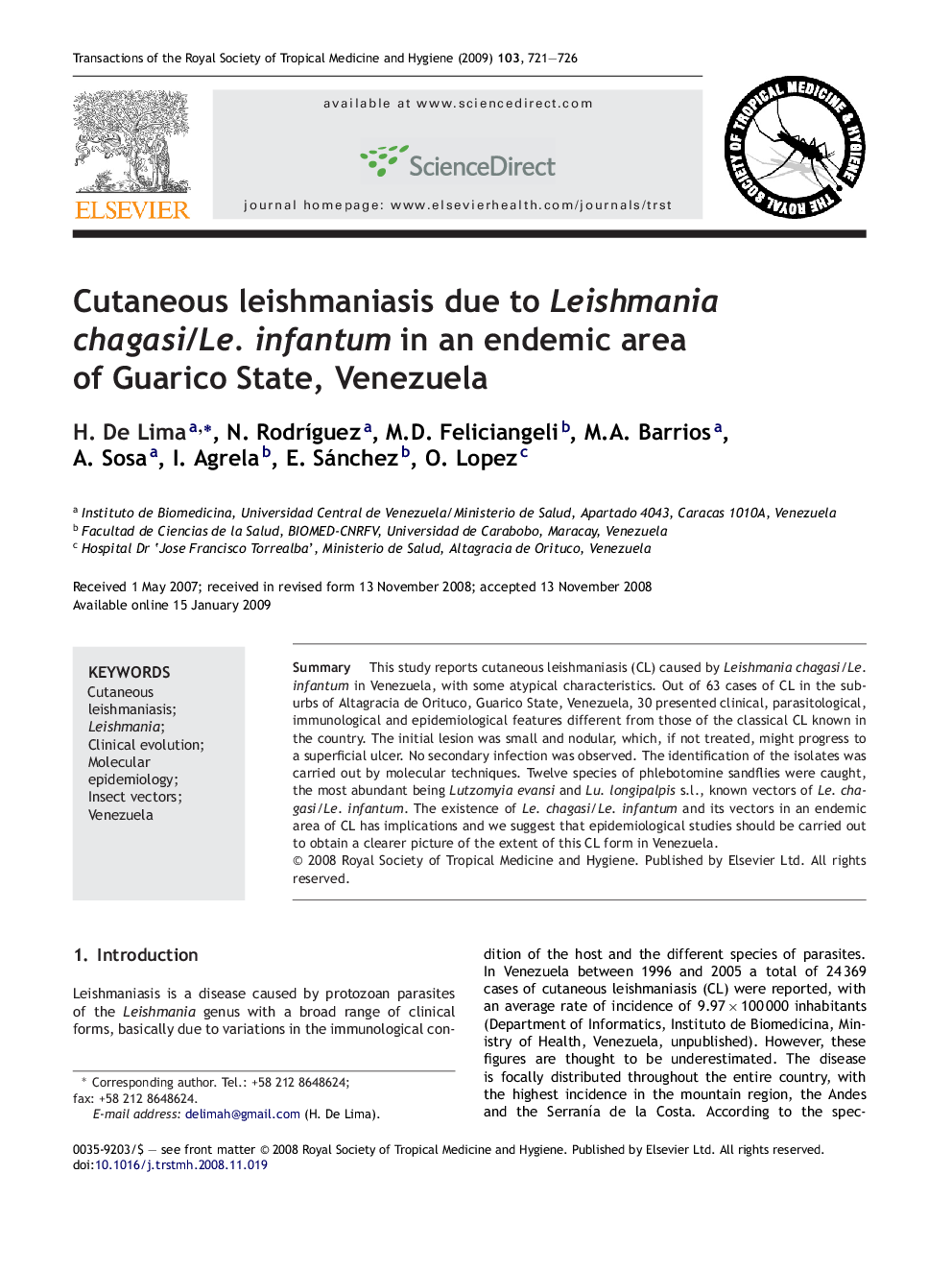| Article ID | Journal | Published Year | Pages | File Type |
|---|---|---|---|---|
| 6137371 | Transactions of the Royal Society of Tropical Medicine and Hygiene | 2009 | 6 Pages |
Abstract
This study reports cutaneous leishmaniasis (CL) caused by Leishmania chagasi/Le. infantum in Venezuela, with some atypical characteristics. Out of 63 cases of CL in the suburbs of Altagracia de Orituco, Guarico State, Venezuela, 30 presented clinical, parasitological, immunological and epidemiological features different from those of the classical CL known in the country. The initial lesion was small and nodular, which, if not treated, might progress to a superficial ulcer. No secondary infection was observed. The identification of the isolates was carried out by molecular techniques. Twelve species of phlebotomine sandflies were caught, the most abundant being Lutzomyia evansi and Lu. longipalpis s.l., known vectors of Le. chagasi/Le. infantum. The existence of Le. chagasi/Le. infantum and its vectors in an endemic area of CL has implications and we suggest that epidemiological studies should be carried out to obtain a clearer picture of the extent of this CL form in Venezuela.
Keywords
Related Topics
Life Sciences
Immunology and Microbiology
Applied Microbiology and Biotechnology
Authors
H. De Lima, N. RodrÃguez, M.D. Feliciangeli, M.A. Barrios, A. Sosa, I. Agrela, E. Sánchez, O. Lopez,
